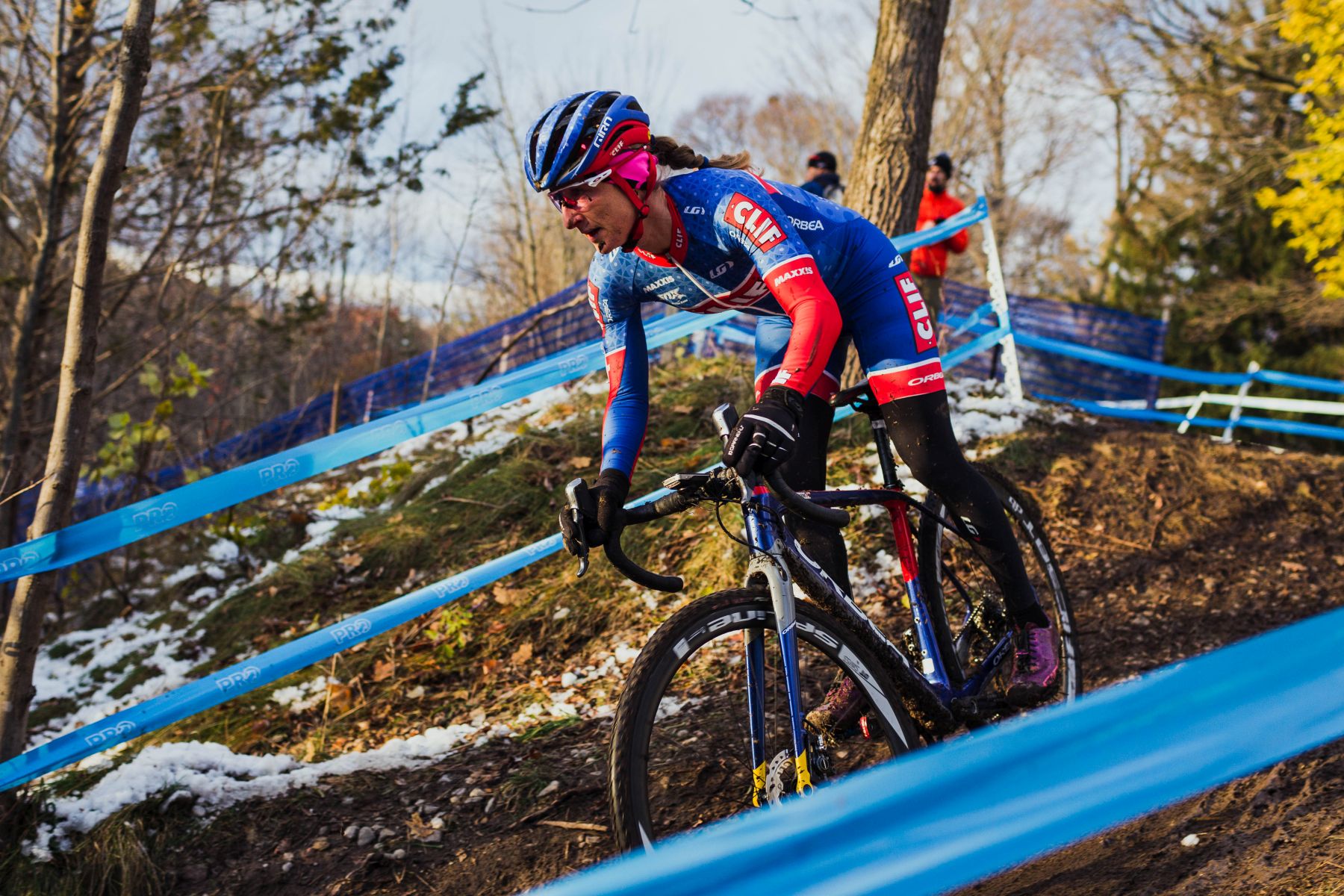Mountain bike skills for curly-bar riders
Improve handling on CX courses or gravel roads with some singletrack wisdom

by Andre Perret
During the past five years, I have descended more than 100,000 feet in enduro races around Vancouver. Then, I got into cyclocross thanks to two Dutch friends. Like many riders, I was struck by how mountain bike handling techniques work so well for cyclocross and gravel riding.
At the core is the curly-bar-bike ready position. It might feel foreign to road riders, but I’ll break it down and tell you how it works in five easy steps.
1. Get up
You have to get out of your seat to control your bike. If you’re not pedalling, hover over the saddle. Get into a crouch with your knees bent.
2. Drop your heels
Watch any talented BMX, trials or mountain biker on flat pedals. You’ll see their heels are consistently below their pedal axles when they’re riding aggressively. If you are a road rider who stands on your tiptoes slightly, you could get a few centimetres of drop by shifting your heels downward. Your centre of gravity will move lower, too. You’ll notice that both Sven Nys and Mathieu van der Poel drop their heels.
If you don’t drop your heels, you can’t keep your weight low and rearward, which is a prerequisite for the next two cross-road skills.
3. Drive your front wheel into the ground
The biggest myth in cyclocross cornering is that your front wheel slides out because you have too much weight on it. Your front wheel should have some downward force on it. Finding the right amount is a balancing act. A lot depends on the ground conditions (dry, wet or loose) and the tilt of your bike (diving into a downhill turn or twisting through an off-camber corner).
In order to ensure your front wheel does not slip first, you need to keep some pressure on it. On loose gravel turns, aim to weight the front to encourage your rear tire to break first. A rear-wheel slip has far fewer consequences.
4. Elbows out
By putting your elbows out, you bring your chest, back and core muscles into play for bike control and to weight the front tire. Keep you hands on the hoods, which also helps with control.
5. Lean the bike, not the body
By leaning your bike more than your body in a turn, you keep your weight over the tires to increase traction. Weight the outside pedal, lean the bike and use your weight to push the bars through the turn. Then come out the turn, and head as fast as you can to the next one.
